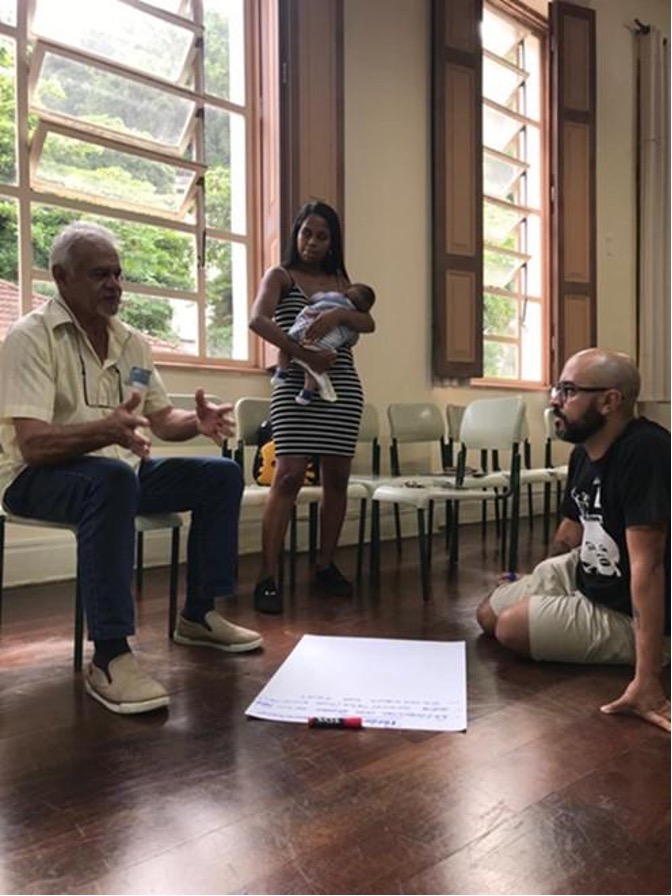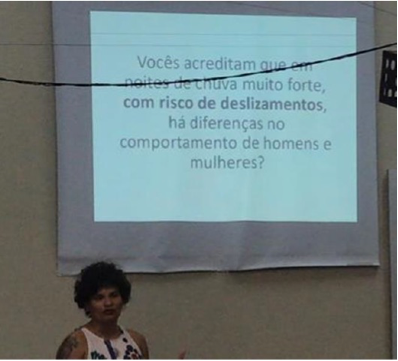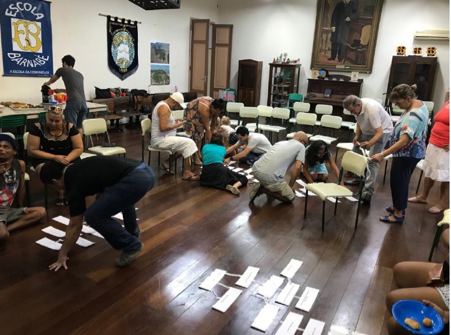



El enfoque de género de Monte Serrat reconoce a las mujeres como víctimas, pero también como parte de la solución. El cambio climático afecta de forma diferente a los grupos social, medioambiental y económicamente vulnerables, ya sean mujeres, pueblos indígenas o comunidades. Por otro lado, la toma de decisiones de las mujeres ante los riesgos climáticos puede ser más rápida y eficaz.
Es esencial pensar en soluciones que respeten el derecho a la no discriminación de estos grupos. Guiándose por las recomendaciones internacionales, la integración de la perspectiva de género favorece la participación y el compromiso equitativo de todas las personas que viven en Monte Serrat. Además, se trataba de promover la representatividad del personal técnico encargado de aplicar las medidas de EbA.
La equidad de género se reforzó en todas las etapas y se tradujo en una mayor participación de las mujeres, incluidas las embarazadas, las lactantes y las mujeres con recién nacidos y bebés, sin la vergüenza de llevar a los niños al espacio del taller. Fueron acogidas y recibieron una atención especial gracias al apoyo de la Secretaría de Asistencia Social del municipio.
Esto hizo posible que las mujeres se sintieran cómodas para contribuir a la construcción de soluciones EbA que las beneficiaran directamente, dando sugerencias para un área de recreación para sus hijos con árboles frutales que pudieran ser utilizados en la cocina.
La dinámica Avante/Personare, ayudó a sensibilizar sobre género y vulnerabilidad climática al personal municipal. Basadas en la empatía, las actividades se apoyaron en personajes y casos ficticios para trabajar el reconocimiento, especialmente en una emergencia climática, de los privilegios en términos de clase, raza y género con la comunidad y el equipo técnico. Las experiencias provocaron reflexiones y malestar sobre relaciones desiguales que no estaban presentes previamente entre las personas formadas.
Entre las sugerencias para incluir a más mujeres en los próximos pasos del proceso participativo se incluye la celebración de talleres de educación socioambiental, centrados en el impacto del cambio climático sobre los grupos vulnerables. La aplicación debe basarse en acciones transparentes de los organismos locales implicados para incluir siempre a las mujeres y comunicarse con ellas del mismo modo que con los hombres.
Es importante cuidar el lenguaje utilizado para invitar a las mujeres a los talleres. Se debe crear un ambiente acogedor y de confianza para que las mujeres se sientan cómodas hablando de sus percepciones, ideas y necesidades. Muchas mujeres dejaron de participar en los talleres, sobre todo los fines de semana, cuando no tenían con quién dejar a sus hijos. Una vez identificado el problema, se puso en marcha con éxito una solución creativa para acomodar a los niños. El compromiso de las partes fue fundamental para reforzar constantemente la aplicación de la lente de género en las soluciones medioambientales. La eficacia de la aplicación depende del enfoque conjunto entre género, vulnerabilidad socioeconómica, cambio climático y restauración medioambiental.